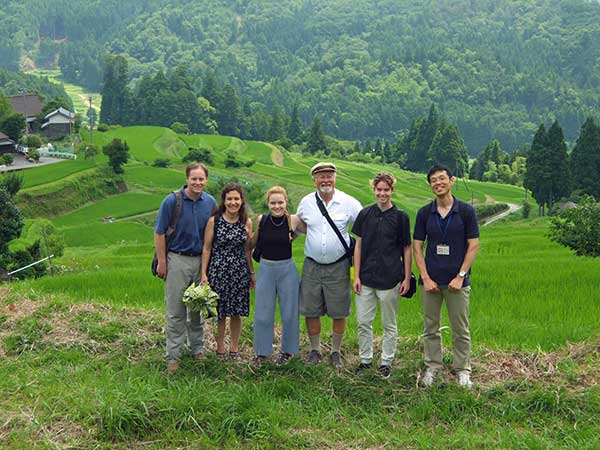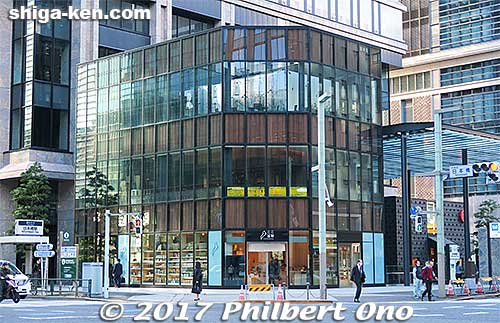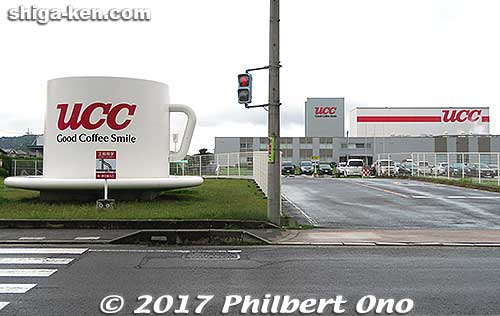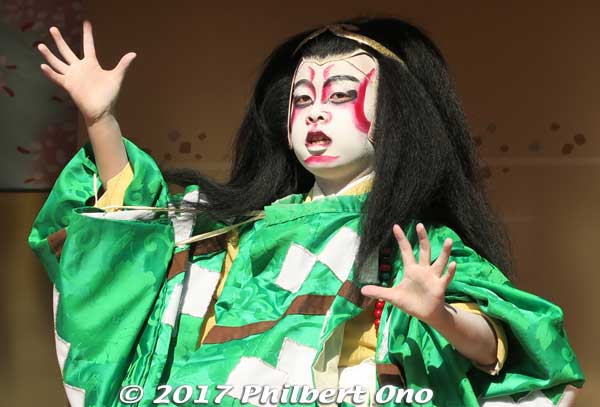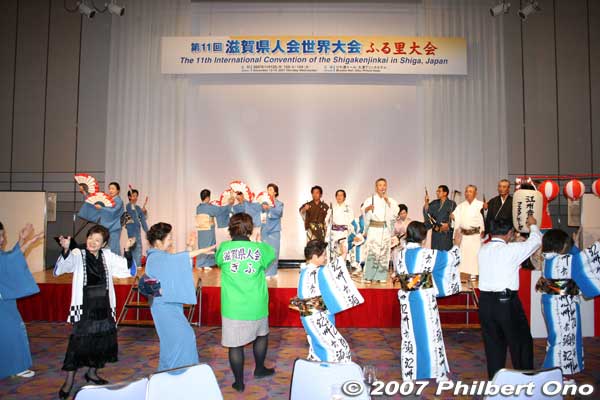
Updated April 2, 2023
Shiga Kenjinkai (滋賀県人会) is a group or association of people outside Shiga who have ties to Shiga Prefecture. Kenjinkai literally means “native people of the prefecture.” Most Shiga Kenjinkai members are originally from Shiga, but members can also be descendants of people originally from Shiga. Anybody interested in Shiga can also become a member. Annual dues is around ¥3,000.
Other prefectures in Japan also have their own Kenjinkai, but the Shiga Kenjinkai probably has the largest network with at least one chapter in most of the 47 prefectures as well as overseas: USA (Seattle, Southern California, and Hawaii), Canada (Vancouver, Alberta, and Toronto), Mexico, Brazil, Argentina, Peru, Hong Kong, Singapore, Thailand (Bangkok), Indonesia, France, UK, and Germany.
All the Shiga Kenjinkai chapters in Japan and overseas belong to the National Association for Shiga Prefecture (or National Federation of Shiga Kenjinkai) (全国滋賀県人会連合会) called Zenkoku Shiga Kenjinkai Rengokai or Zenjiren for short.
Note that in Shiga’s sister state Michigan, there is the Shiga Kenjin Kai of Michigan. This organization centers on sister-state relations, and it is not affiliated with the National Federation of Shiga Kenjinkai.
The national association was originally founded in 1964 to link up all the Shiga Kenjinkai under the name Zenkoku Shiga Kenjinkai (全国 滋賀県人会). In 1989, it transformed into a more formal organization under the current name. The national federation has its office in Otsu (Address: Hayashi Bldg. 1st floor, Umebayashi 1-15-30, Otsu, Shiga, Japan 520-0051). Each chapter receives a small annual subsidy from the national federation.
The Shiga Kenjinkai in Japan originated from Omi shonin merchants who plied up and down the Japanese archipelago during the Edo Period selling merchandise from Shiga, especially fabrics, lacquerware, medicine, and pottery. They settled all over Japan.
In Tokyo, many fabric wholesalers from Shiga (Omi) settled in Nihonbashi, a major business district even today. One example is the famous Shirokiya clothing shop which was bought out by Tokyu Dept. Store. Trading company Itochu was also based in Nihonbashi for many years before they moved to Aoyama. Tokyo’s Shiga Kenjinkai has its office in Nihonbashi, and Shiga Bank’s Tokyo branch is in Nihonbashi as well.
The often-mentioned spirit and motto of the Shiga Kenjinkai is the motto of the Omi shonin merchants called sanpo-yoshi (三方よし). It literally means “Good for all three parties.” The business conducted must be “Good for you, good for me, and good for society as a whole.” It was the backbone of the Omi merchants’ social responsibility lauded even today.
Membership
In Japan, many Shiga Kenjinkai have Omi shonin merchant roots. During the feudal era, eastern Shiga had many merchants called Omi shonin who traveled up and down Japan. They sold fabrics, lacquerware, medicines, etc., and established branch outlets all over Japan. (A few of them became major department stores like Takashimaya, fabric wholesalers like Shirokiya, and trading companies like Itochu.) Thus, many natives of Shiga moved away and settled all over Japan to sell their wares.
In the US, Canada, and South America, most Shiga Kenjinkai members are immigrants from Shiga or their descendants. Canada attracted people in Hikone in the fishing industry. In Europe, where few Japanese immigrated, most Shiga Kenjinkai members are from Shiga but are transient or on temporary overseas assignment and not immigrants.
In Japan, the Shiga Kenjinkai vary widely with regard to the members. The Shiga Kenjinkai in Kyoto and Tokyo are very large with thousands of members. They include prominent business people. Both Tokyo and Kyoto even have their own Shiga Kenjinkai building. Others in more rural prefectures may have fewer than 20 members.
Most Shiga Kenjinkai chapters have an aging membership. It is not uncommon for the average age members to be in the 70s. Recruiting more and younger members is a major issue among many chapters.
Having the children of native Shiga members join the Kenjinkai is one solution. However, most of these children were born and raised outside Shiga and might not be as interested in Shiga as their parents or grandparents (or great grandparents). This also applies to overseas Shiga Kenjinkai.
Shiga Kenjinkai members in Japan receive a discount card for discounts (usually 5% or 10%) from participating Shiga businesses. They include Takashimaya Dept. Store, Nishikawa bedding, Taneya, Biwako Hotel, Otsu Prince Hotel, Lake Biwa Museum, and Museum of Modern Art. Members also receive a news booklet named Omi no Kaze (Wind of Omi おうみの風) twice a year (no English). Your respective Shiga Kenjinkai chapter may also distribute a newsletter to members. The Tokyo Shiga Kenjinkai has their newsletters online for anyone to read.
Activities
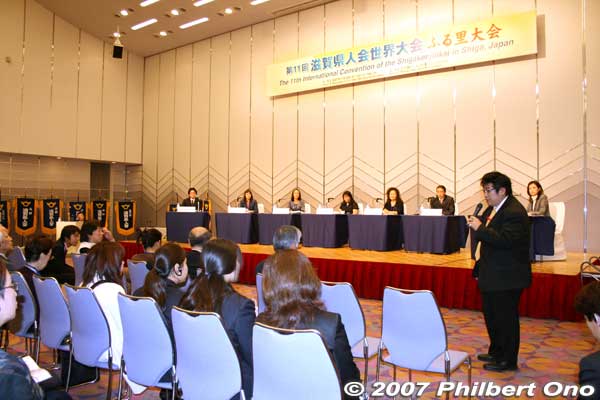
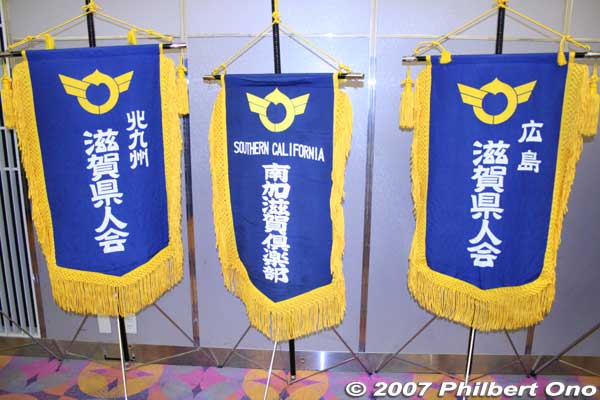
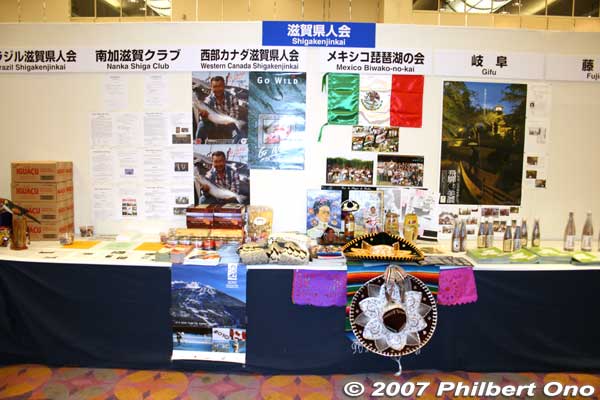
Each Shiga Kenjinkai conduct their own social activities. They may also publish a newsletter or maintain a website. The Shiga Kenjinkai in Tokyo holds a large dinner banquet at a first-class hotel twice a year, for New Year’s and a summer party. Shiga politicians also attend these events. It also publishes a newsletter. The annual membership fee is low (around ¥3000), but dinner banquets cost ¥10,000 which is too much for younger members (college students).
Shiga Kenjinkai chapters in the Kansai Region (Osaka, Kyoto, etc.) hold a joint gathering or banquet with a few hundred members attending.
Overseas Shiga Kenjinkai usually hold picnics and Japanese cultural activities. Or host school kids visiting from Shiga. But there are still doubts about whether kenjinkai activities are attractive enough to recruit new and younger members.
Overseas kenjinkai would be great outlets for overseas PR for Shiga, but they are not supported very well by the National Federation of Shiga Kenjinkai nor the Shiga Prefectural Government or tourist bureaus. Not even Shiga tourist pamphlets are distributed to Shiga Kenjinkai overseas. There is also a language barrier between the Shiga Kenjinkai headquarters in Japan and overseas chapters, especially among younger generation members who don’t speak Japanese.
The Kenjinkai can help promote Shiga in Japan and overseas. However, most of them do not have a website.
Every few years, the National Federation of Shiga Kenjinkai used to hold an international convention where members of all the Shiga Kenjinkai in Japan and overseas could attend and meet each other. The venue changed each time and it has been held in places such as Hawaii, Los Angeles, and South America. However, this international convention is no longer held due to the lack of subsidies from the Shiga Prefectural Government.
The last international convention was held on Nov. 12-14, 2007 in Otsu, Shiga. It was the 11th Shiga Kenjinkai International Convention (滋賀県人会世界大会) held at Otsu Prince Hotel. It was held in Shiga for the first time in 16 years.
About 350 people attended, and about 160 came from overseas. Over 100 came from Canada. There are quite a few Shiga Kenjin in Canada. Some of them were bilingual, and others were not. A few came to Japan for the first time. They thought Japan was a really beautiful country. Most of them still had relatives in Japan or Shiga.
The convention had speakers, symposiums, and presentations from overseas Shiga Kenjinkai. Governor Kada Yukiko and other politicians gave speeches. Governor Kada spoke in both Japanese and English. She even taught the Goshu Ondo dance in English. The convention cost ¥20,000 (excluding lodging). Photos here.
Shiga Kenjinkai Websites
The Shiga Kenjinkai are very friendly. They are always looking for new members. Contact the Kenjinkai nearest you.
See this Japanese list of Shiga Kenjinkai in Japan and overseas. Only a few of them have a website as listed below.
Shiga Kenjinkai websites in Japan (all in Japanese):
- https://zenjiren.com/ – National Federation of Shiga Kenjinkai
- Chiba Shiga Kenjinkai
- Ibaraki Shiga Kenjinkai
- Ishikawa Shiga Kenjinkai
- Nagoya Shiga Kenjinkai
- Hiroshima Shiga Kenjinkai
- Osaka Shiga Kenjinkai
- Kyoto Shiga Kenjinkai
- Saitama Shiga Kenjinkai
- Tokyo Shiga Kenjinkai
Shiga Kenjinkai websites overseas:
Articles about Shiga Kenjinkai overseas:
- http://www.rafu.com/2015/02/shiga-shinnenkai/
- http://www.rafu.com/2016/03/nanka-shiga-club-celebration/
- http://www.rafu.com/2016/09/shiga-scholars/
- http://www.rafu.com/2014/10/2-centenarians-3-scholarship-winners-honored-at-nanka-shiga-club-picnic/


